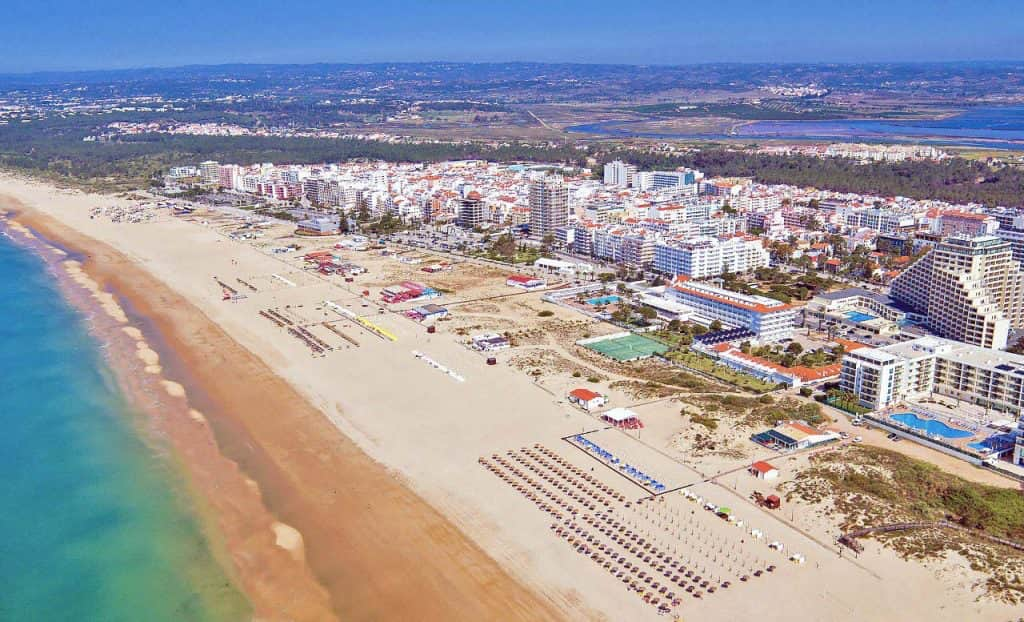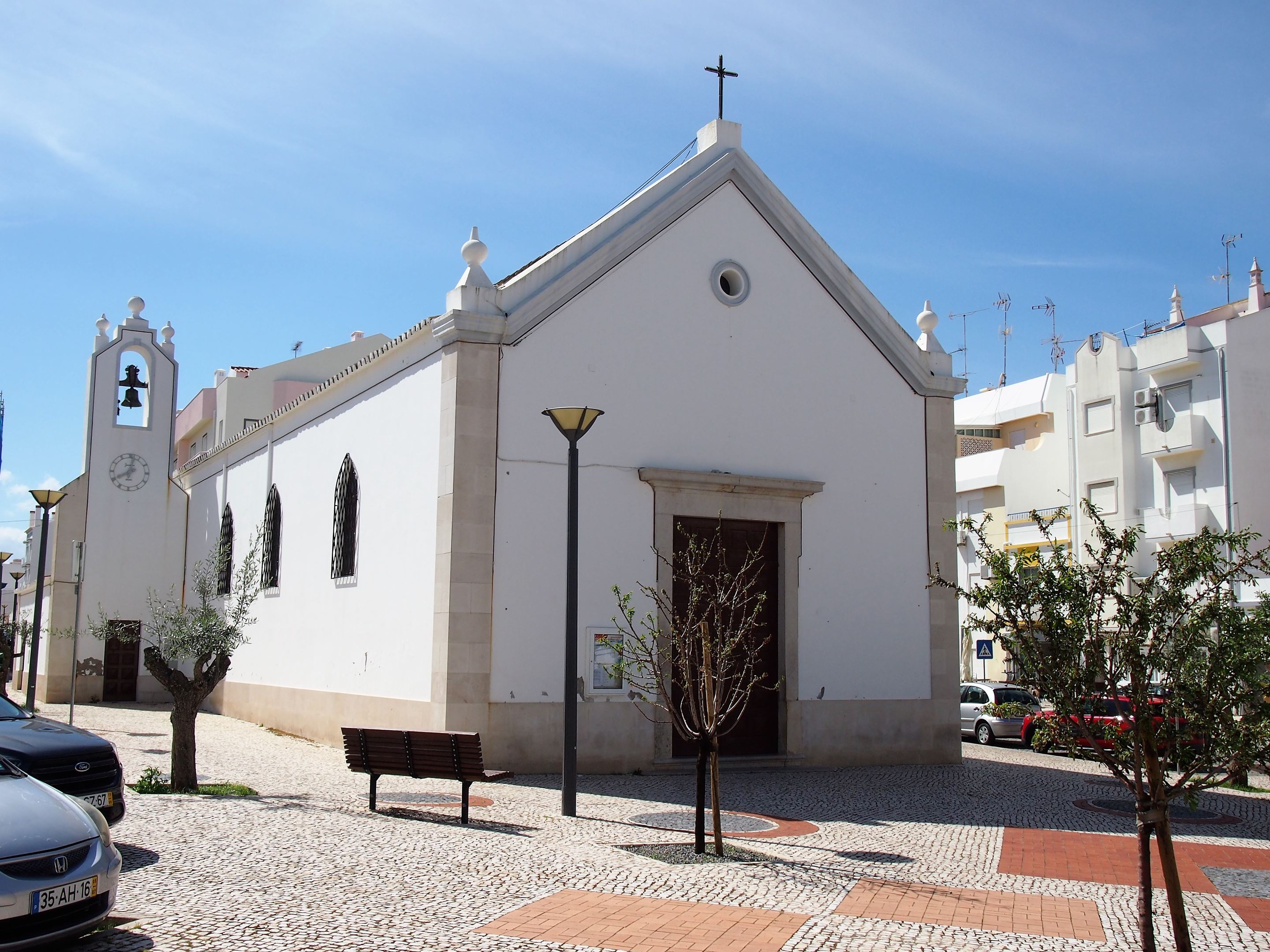
Just three kilometres west of the Algarve’s enormous frontier town of Vila Real de Santo António, the previously peaceful fishing village of Monte Gordo is the last in a long series of popular beach resorts along Portugal’s southern coast.

Bright and cheerful, the town has grown significantly in recent years as a holiday destination, catering to both Portuguese and foreign visitors.
However, the town’s centuries-old fishing culture continues as wives dressed in housecoats emerge from freshly constructed homes to purchase the finest of the fresh catch from local fishermen, who can still be seen occasionally riding rusty bicycles through the streets to deliver their orders.
Monte Gordo not only has the Algarve’s largest beach but also the warmest seas, owing to the Mediterranean climate and its advantageous geographical location at the mouth of the River Guardiana. Fringed by tall trees and facing the sea, its long and vast sands continue uninterrupted for many kilometres, making it one of southern Europe’s most idyllic beach towns
At Manta Rota, a few kilometres west of Monte Gordo, the Ria Formosa Natural Park’s lagoons give way to the vast open sea. Ria Formosa, which stretches about 60 kilometres and covers more than 1800 hectares, is a critical wintering ground for birds from northern and central Europe and a critical stopover for migratory birds migrating between northern Europe and Africa.
Continuing westward gets you to Cacela Velha, a charming tiny village created by the Phoenicians with a wonderful church plaza overlooking the lagoon and surrounded by various off-shore beaches. The church comes from the sixteenth century and is distinguished by a magnificent Renaissance main entrance and a Gothic side door.
The River Guadiana, which empties into the Atlantic Ocean at the lovely border town of Vila Real de Santo António, is a natural barrier for more than 2,000 years, initially constituting the border between the Roman provinces of Lusitania (Portugal) and Baetica (southern Spain). Regular river excursions introduce guests to the serenity present in this region of Portugal, with leisurely stops in some of the most scenic and peaceful towns and villages in the country.

Vila Real de Santo António is centred on a huge, airy central plaza laid in a radiating sunburst pattern. After being submerged by the water in the 17th century, it was rebuilt by the Marquês de Pombal on a grid system identical to that of Lisbon’s Baixa area, giving the town an architecturally distinctive appearance in the Algarve.
Castro Marim, the initial headquarters of the Military Order of Christ, Portugal’s successors to the Templars, is located a short drive north of Monte Gordo. With a view over the Guadiana to Spain, the mediaeval castle’s sandstone walls encircle the remnants of an even older fort.




